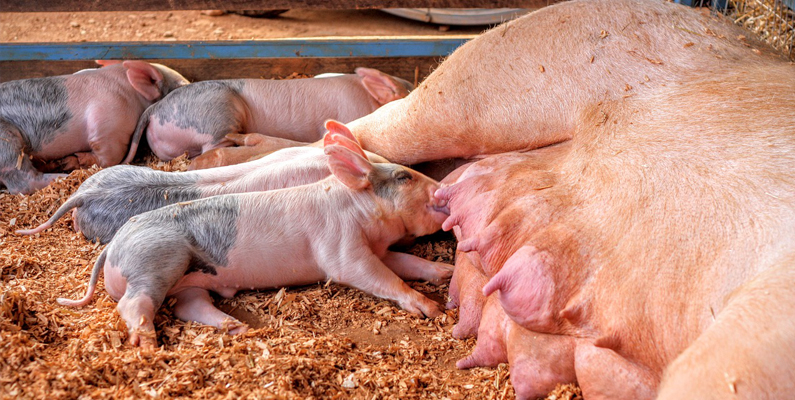
Use of Antimicrobials in Pig Breeding and Farming
Anyone involved in pig breeding and/or farming understands that there can be a need to use antimicrobials (also referred to as antibiotics) in order to address outbreaks of disease. However, RUMA (Responsible Use of Medicines in Agriculture Alliance) indicates in its “Responsible use of antimicrobials in pig production” that a farmer’s goal should always be “using medicines as little as possible and as much as necessary”. This means two things:
- Little usage – A farmer first reduces the risk of disease threats by proper farm management (including hygiene, ventilation, fresh water, and nutrition), and never uses medications as a substitute for proper farm management
- Much usage – As much is needed when prescribed by a veterinarian, when used correctly, giving a full course and monitoring the animal’s outcomes
Realistically, the group is expressing a common sense statement about pig breeding, and that is that it is through good practices that emphasize animal health and welfare in pig breeding that antimicrobial usage can be easily limited.
Common wisdom indicates that living conditions are one of the heaviest influences on the need for antibiotics in a pig population. As a report from the European Commission says, “The better the husbandry and rearing conditions, the higher will be the general health status of the animals, with less need for treatment.”
Yet husbandry means several things, and where pig breeding and antibiotics are concerned, farmers must see it as including biosecurity, elimination of specific pathogens and the best management practices of farm buildings. Farmers must also have specific alternatives to antibiotics available, such as vaccinations, breeding for robustness and disease resistance, and the use of feeding systems that cut down on issues.
In this way, it becomes all about the optimization of your farm management, with one goal being to reduce and simultaneously enhance the use of specific antimicrobials. This can mean introducing the latest delivery systems, but might also mean running a few farm comparisons to determine how other breeds, other systems and even other building or layout designs cut down on the use of antimicrobial treatments.
A solid first step is to ensure your farm buildings have the space, ventilation, design, and systems (feeding, water, flooring, and temperature controls) that facilitate reduced use of antibiotics. Get in touch with IDS Pigs to consult about your current system and discover if a bespoke solution might improve your pig breeding and farming outcomes.
Please call us on +353 57 86 21224 to discuss our previous work and how we can assist you with your Pig Housing Project
